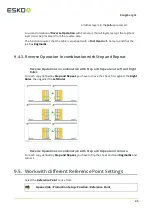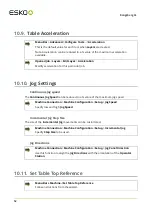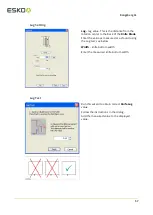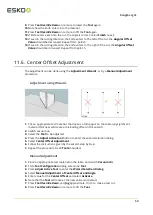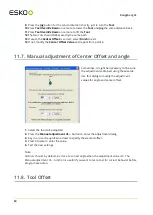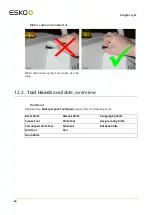
10
Kongsberg XL
Procedure:
1.
If the table is equipped with a
Conveyor Belt
, move the belt junction away from the table
surface.
2.
Execute the
Map Table Top
function.
3.
Follow the instructions given by the wizard.
Note:
iPC 2.1
: The mechanism of compensating Z height during cutting, based on table top mapping,
has been disabled when cutting underlay has been measured to be more than 5mm.
This level is normally reached when milling on top of milling mat and conveyor belt.
This exception was introduced long time ago, before using conveyor belts.
At that time, a (MDF) plate was used as milling underlay. The plate was milled in order to make
a perfectly compensated underlay for milling.
As this function is not used anymore, and conveyor belts break the 5 mm limit, iPC now always
compensate based on table top mapping.
A registry setting is available to enable the old behavior.
10.7.
Reference Points
and
Coordinate System
Reference Points
settings is maintained from:
Menu Bar
->
Edit
->
Options
...->
Reference Points
All X and Y coordinates in the
Input File
have the selected
Reference Point
as origin.
Two modes of operation are available:
• Using
Main Reference Point
• Using
User Defined Reference Point
The Main Reference Point position
The
Main Reference Point
is a fixed position on the
Cutting Table
marked as a cross of drilled
holes.
The
User Defined Reference Points
are all specified relative to the
Main Reference Point
.
Thus, moving the
Main Reference Point
will move these reference points as well.
The
Main Reference Point
has to be correctly positioned in order to obtain:
• A full Work Area.
Using the
Main Reference Point
during program execution ensures correct operation.
50










